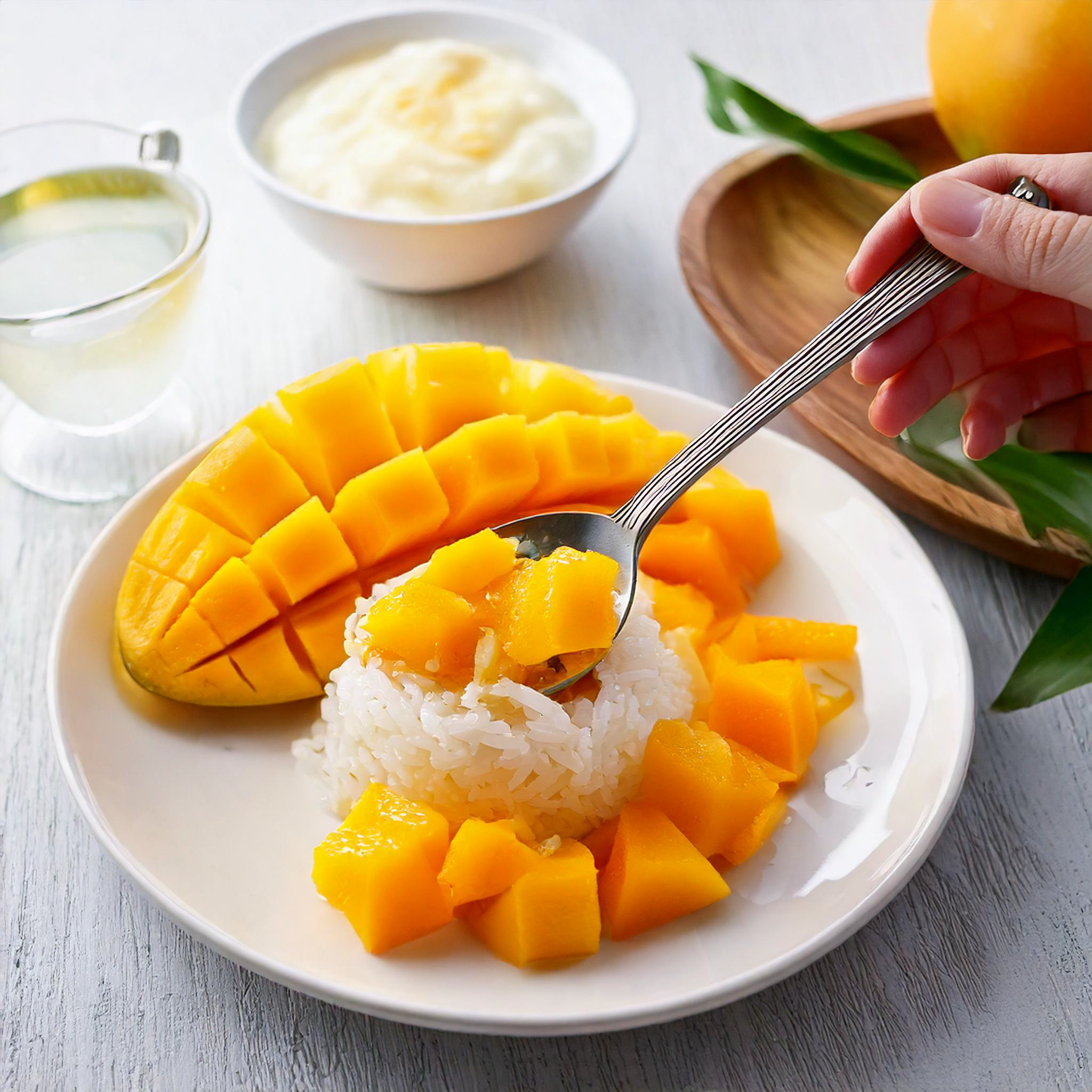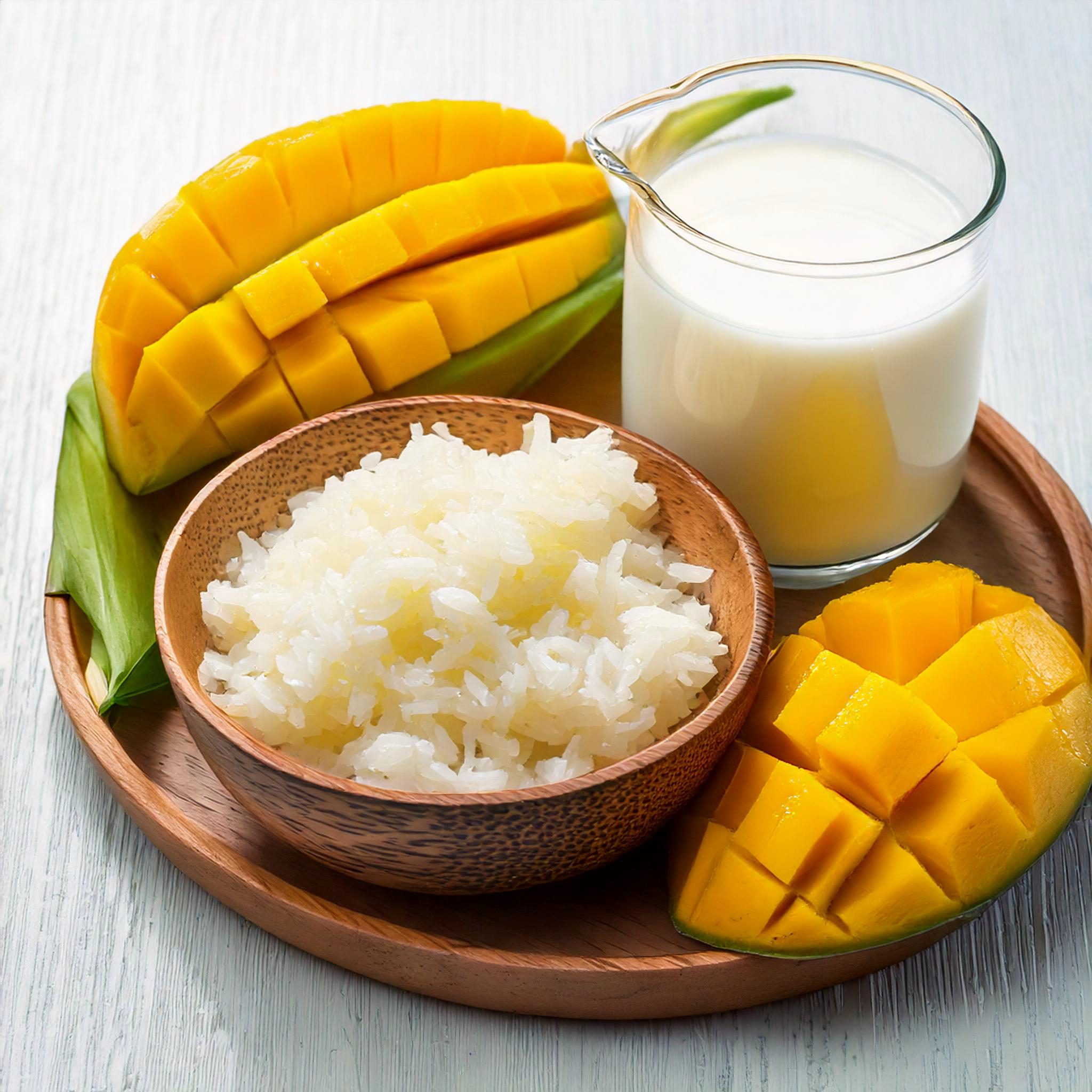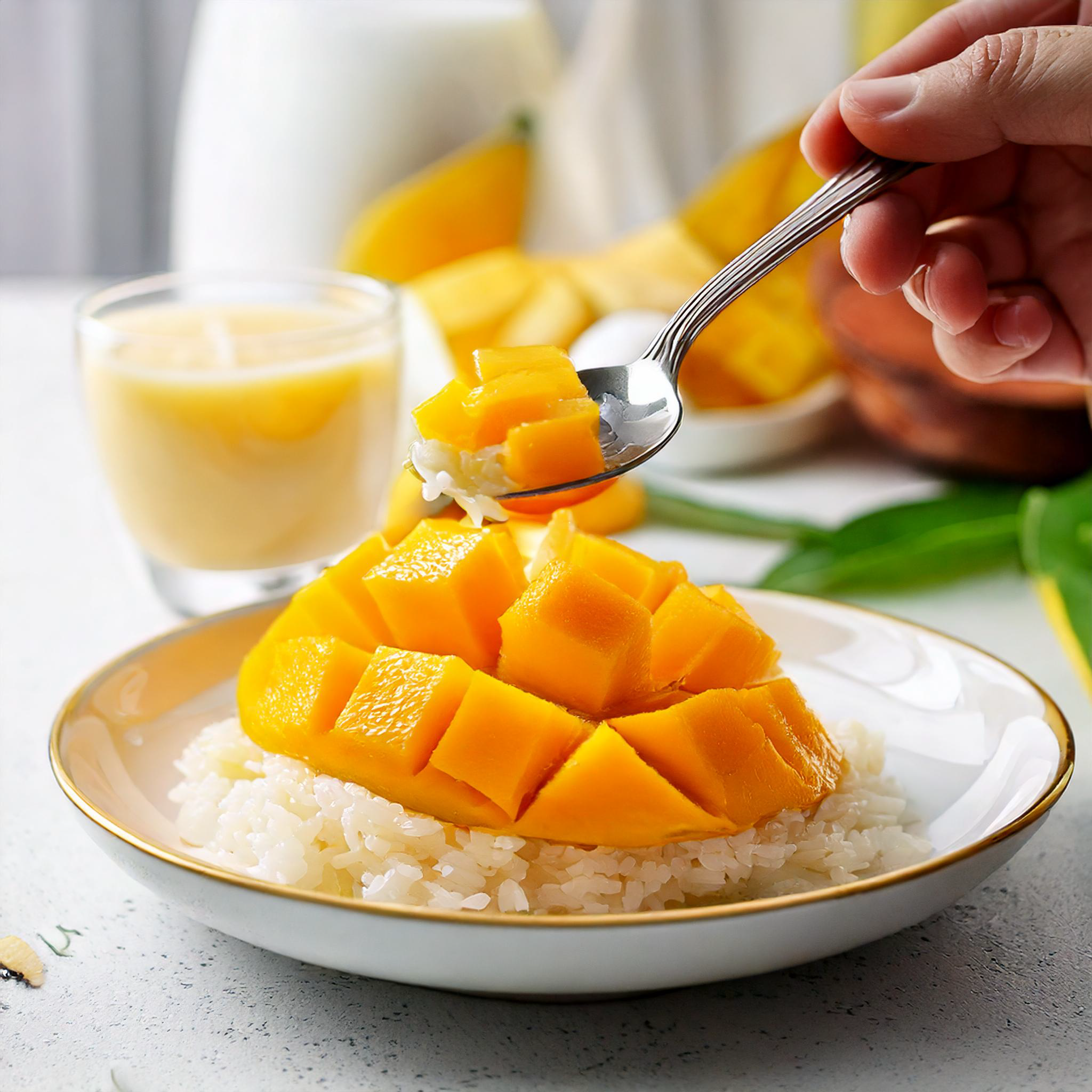Mango Sticky Rice: A Sweet Journey into Thai Cuisine

Mango Sticky Rice is a delightful Thai dessert that combines the creamy richness of coconut-infused sticky rice with the sweet, juicy flavor of ripe mangoes. Loved by locals and tourists alike, this dish has become a staple in Thai cuisine and an international favorite. But what makes it so special? Let’s dive into its history, preparation, and some fun variations to try at home!
Table of Contents
The Origins of Mango Sticky Rice
Mango Sticky Rice, known as Khao Niao Mamuang in Thailand, has been a beloved dish for centuries. It is traditionally enjoyed during the peak mango season, which runs from March to June. The dessert is believed to have originated in Thailand, where sticky rice has been a dietary staple for generations. The combination of sticky rice with coconut milk and mangoes showcases the balance of flavors that Thai cuisine is known for—sweet, creamy, and slightly salty.
This dish is commonly found at street food stalls, high-end restaurants, and even home kitchens throughout Thailand and Southeast Asia. It is often served during the Songkran Festival, Thailand’s New Year celebration, as a symbol of prosperity and happiness.
Key Ingredients Explained
1. Glutinous Rice (Sticky Rice)
The foundation of this dish is glutinous rice, a type of short-grain rice that becomes sticky when cooked. Unlike regular rice, glutinous rice is soaked before cooking to achieve the perfect chewy texture.
2. Coconut Milk
Coconut milk gives Mango Sticky Rice its signature creamy texture. It is used to flavor the rice and create a delicious sauce to drizzle on top. The slight saltiness in the coconut milk enhances the sweetness of the mangoes.
3. Mangoes
Ripe, juicy mangoes are key to making this dessert truly delicious. Thai Nam Dok Mai and Ataúlfo mangoes are preferred for their sweetness and smooth texture.

Step-by-Step Preparation Guide
1. Preparing the Sticky Rice
- Rinse 1 cup of glutinous rice in water until the water runs clear.
- Soak the rice in water for at least 4 hours or overnight.
- Drain the rice and place it in a steamer lined with cheesecloth.
- Steam over boiling water for 20-25 minutes until the rice becomes tender and translucent.
2. Making the Coconut Sauce
- In a saucepan, heat 1 cup of coconut milk, ½ cup of sugar, and ½ teaspoon of salt over medium heat.
- Stir until the sugar dissolves, but do not let it boil.
- Remove from heat and pour half of the coconut mixture over the steamed rice.
- Cover and let the rice absorb the coconut sauce for about 20 minutes.
3. Assembling the Dessert
- Slice fresh mangoes into thin pieces.
- Place a portion of sticky rice on a plate and arrange the mango slices alongside.
- Drizzle the remaining coconut sauce over the rice.
- Garnish with toasted sesame seeds or mung beans for added texture.
Variations and Modern Twists
While the classic Mango Sticky Rice is perfect as is, there are some fun variations to try:
- Black Sticky Rice Version: Use black glutinous rice for a nutty flavor and a striking color contrast.
- Chocolate Drizzle: Add a light chocolate drizzle for an indulgent twist.
- Mango Sticky Rice Ice Cream: Mix the rice with coconut milk and freeze it for a unique ice cream-like texture.
- Fruit Medley: Swap out mangoes for other tropical fruits like papaya, pineapple, or dragon fruit.
Pairing Mango Sticky Rice with Beverages
To enhance the experience, pair this dessert with:
- Thai Iced Tea – The strong tea flavor balances the sweetness of the dish.
- Coconut Water – A refreshing and light pairing that complements the creamy rice.
- Jasmine Tea – The floral notes of jasmine tea enhance the tropical flavors.
Nutritional Insights
Although Mango Sticky Rice is a sweet treat, it contains natural ingredients that provide some health benefits:
- Mangoes are rich in Vitamin C, fiber, and antioxidants.
- Coconut milk contains healthy fats that can aid in digestion.
- Sticky rice provides a good source of energy but should be eaten in moderation.
For a lighter version, consider using less sugar and light coconut milk.
Frequently Asked Questions (FAQ)
1. Can I use regular rice instead of glutinous rice?
No, glutinous rice is essential for the right texture. Regular rice will not give you the same sticky consistency.
2. How long does Mango Sticky Rice last?
It’s best enjoyed fresh, but you can store it in an airtight container in the fridge for up to 2 days. Reheat gently before serving.
3. Can I make it vegan?
Yes! The traditional recipe is naturally vegan since it uses coconut milk instead of dairy.
4. What can I use instead of mangoes?
Try using bananas, strawberries, or even durian for a unique twist.

Mango Sticky Rice
Mango Sticky Rice is more than just a dessert—it’s a piece of Thai culture that brings people together with its comforting flavors. Whether you stick to the classic version or try a modern twist, this dish is sure to impress. Now that you have all the secrets, why not give it a try at home? Let us know how it turns out!
